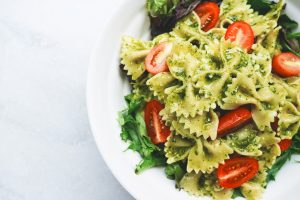
The BIG Dietary Question: To Graze or Not to Graze?
Let food by thy medicine
When it comes to diets, there is never a consistent answer as to which one is the best. One minute, gluten-free is the way to be, and the next, we are told that oatmeal and whole grains are superfoods that will provide our bodies with essential nutrients. Despite the debate, one eating plan that has always managed to stay popular is the “grazing diet.”
What is Grazing?
Grazing is the pattern of eating multiple mini-meals during the day instead of 3 larger meals. The idea of it is that eating 4-6 meals throughout the day is the best way to fill up, keep your hunger under control, and manage your blood sugar. Eating smaller portions every few hours can also elevate your metabolism and maintain energy levels.
However, before you adopt the grazing diet and reach for a snack, consider the benefits and drawbacks this diet can have when it comes to your diabetes eating plan:
Pros of Grazing
- Grazing can help you feel full longer. When you eat more frequently, your body receives a steady supply of glucose or sugar. This will keep you fueled, meaning you’ll feel full and not hungry. According to the USDA, people who eat several nutrient-dense snacks made up of fresh produce, lean protein, and whole grains are less likely to overeat or reach for unhealthy “junk” food in a moment of low blood sugar.
- Grazing can boost your metabolism. Every time we eat, our metabolism increases slightly so our bodies can digest the food. Some physicians think that frequent meals will keep our metabolisms working in high gear throughout the day.

Cons of Grazing
- Grazing may not help you lose weight. Studies have shown that grazing can actually increase total daily calorie intake and therefore it is not the best diet for those looking to drop a few pounds. This is because losing weight is all about calories. A study by the U.K. National Institute for Health Research showed that weight loss is affected by what and how much people eat as opposed to when they eat it.
- Grazing can lead to you losing track of calories. It is easy to forget what you are eating while frequently snacking, which can lead to forgetting how many calories, sugars, and carbs you have consumed during the day.
Summary So what is the general consensus? There really isn’t one.
No diet fits everyone perfectly. While some bodies benefit from grazing, others do better with two or three large meals. Generally, the American Diabetes Association recommends people with diabetes eat three meals each day, plus one or two smaller, nutrient-dense, low carb snacks to help prevent blood sugar drops and spikes. The best diet for you is the one where you listen to your own body, because no two people are the same.
Disclaimer: Any information provided is not intended as medical advice. Iowa Diabetes is not responsible for any information from third parties.






